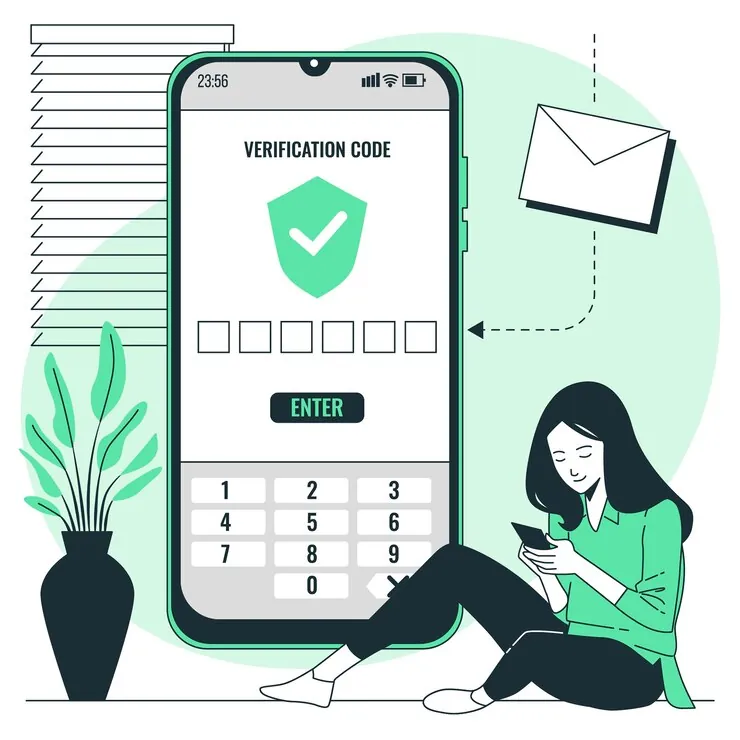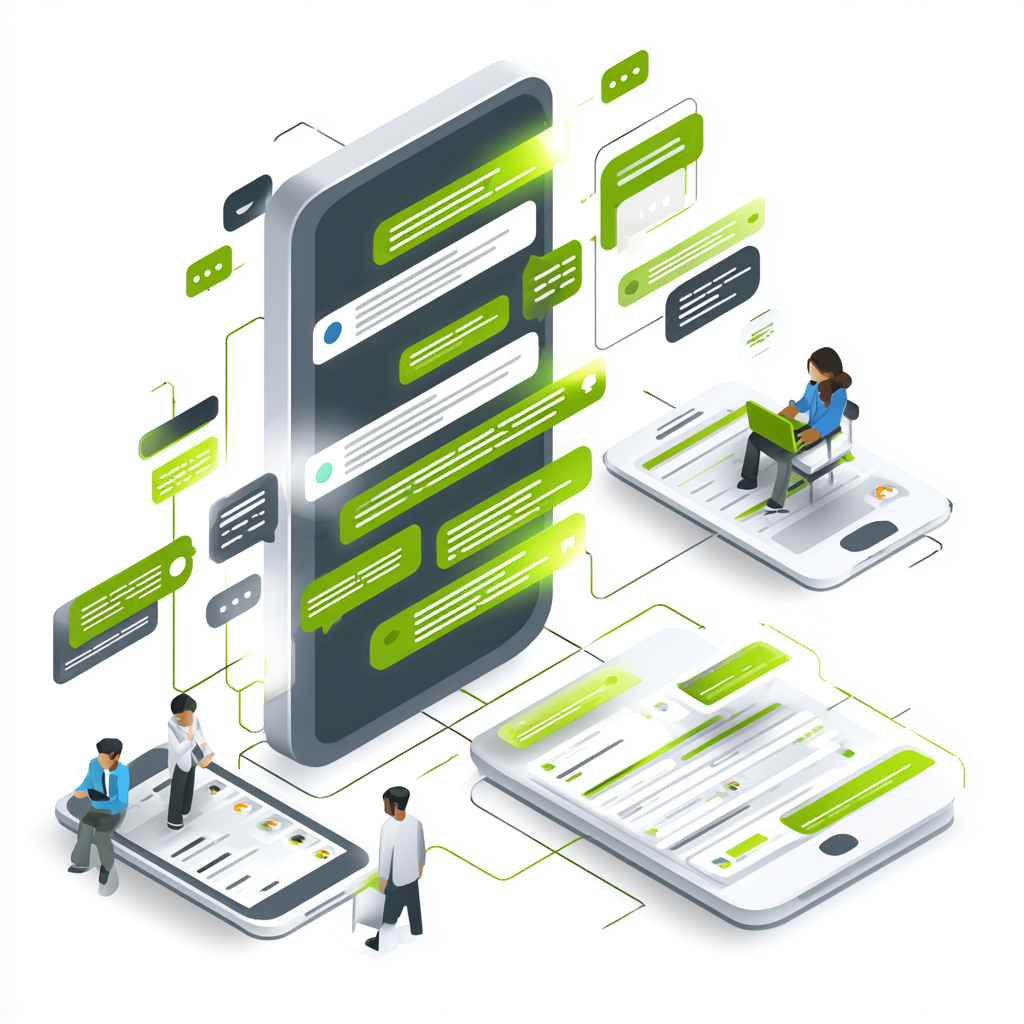One-time passwords (OTPs) have become an essential layer of authentication for online security. Whether logging into accounts, authorizing transactions, or resetting passwords, OTPs play a critical role in safeguarding sensitive information.
However, with the increasing sophistication of cyber threats, ensuring the security of OTP transmissions has become a priority for businesses and individuals alike.
This article explores best practices, modern challenges, and actionable strategies for securing OTP transmissions, emphasizing user-centric and technical perspectives.
Understanding OTP vulnerabilities
To effectively secure OTP (One-Time Password) transmissions, it is essential first to recognize the vulnerabilities that can compromise their security. Several common risks are associated with OTPs, and understanding them can help mitigate potential threats:
- SIM swapping attacks: Cybercriminals exploit telecom systems to transfer a user’s phone number from their legitimate SIM card to a new one that the attacker controls. Once this switch occurs, the hacker can receive OTPs sent via SMS or other communication channels, bypassing two-factor authentication (2FA) and gaining unauthorized access to the victim’s accounts. These attacks are particularly dangerous because they exploit vulnerabilities in telecom security protocols, often without the victim’s knowledge.
- Phishing scams are fraudulent emails, websites, or messages that trick users into providing sensitive information, such as OTPs. These scams can be highly convincing and often mimic legitimate communication from trusted entities. By luring users into submitting OTPs on fake pages or responding to fraudulent messages, attackers can access protected accounts and cause significant security breaches. Phishing attacks can occur through various channels, including emails, SMS, and social media platforms.
- Man-in-the-middle (MitM) attacks: In this attack, an attacker secretly intercepts communication between a user and a service provider, typically while OTPs are transmitted. This interception can happen over insecure or unencrypted networks, such as public Wi-Fi hotspots, making it easier for cybercriminals to capture OTPs and use them to access sensitive data or accounts. In some cases, attackers can alter the OTPs or inject malicious data into the communication, making this vulnerability particularly dangerous.
- Device compromise: Malware or spyware installed on mobile devices or computers can access sensitive data, including OTPs received through SMS, apps, or email. Once a device is compromised, attackers can monitor activity, steal authentication codes, and bypass security measures without the user’s awareness. This risk highlights the importance of maintaining robust endpoint security, including the use of antivirus software, regular device updates, and caution when downloading applications or clicking on suspicious links.
Best practices for securing OTP transmissions
To mitigate these vulnerabilities, organizations and users can adopt the following measures for securing OTP transmissions.
- Use encrypted channels
- Why it matters: Encryption prevents unauthorized access during OTP transmission.
- How to implement: Utilize HTTPS for web applications and ensure end-to-end encryption for mobile app communications.
- Multi-factor authentication (MFA)
- Why it matters: OTPs alone are not foolproof. Combining them with other authentication factors enhances security.
- How to implement: Pair OTPs with biometric verification or hardware tokens.
- Token-based delivery systems
- Why it matters: Avoid reliance on SMS, vulnerable to SIM swapping and network interception.
- How to implement: Use dedicated authenticator apps, such as Google Authenticator or Microsoft Authenticator, which generate OTPs on secure platforms.
- Limit OTP lifespan and use.
- Why it matters: Longer OTP validity increases the window of opportunity for attackers.
- How to implement: Set OTPs to expire after a short duration (e.g., 30 seconds) and allow single-use only.
- Educate users
- Why it matters: Users are often the weakest link in security.
- How to implement: Conduct awareness campaigns about phishing, secure practices, and safeguarding OTPs.
Modern challenges in OTP security
Despite strong measures, new challenges continue to emerge:
- Sophisticated social engineering attacks: Attackers use AI and advanced techniques to deceive users.
- Advances in malware: Malicious software targeting OTP-generating apps or SMS delivery systems is becoming more prevalent.
- Regulatory compliance: Organizations must navigate diverse regulations (e.g., GDPR, PCI DSS) while securing OTPs.
Enhancing user-centric solutions
User involvement in OTP security is crucial and cannot be overlooked. While organizations implement robust systems, users must adopt safe practices to minimize risks:
- Avoid sharing OTPs: Users must be cautious and never share OTPs with anyone, even if the request appears legitimate.
- Verify communication channels: Always ensure the legitimacy of platforms requesting OTPs. Fraudsters often impersonate reputable organizations.
- Use secure devices: Keep devices updated with the latest security patches and avoid using public networks for sensitive transactions.
Emerging technologies in OTP security
As cyber threats evolve, so do the technologies designed to combat them, helping in securing OTP transmissions more effectively.
1. Biometric integration
Biometrics, such as fingerprint or facial recognition, add a unique layer of security. By combining biometrics with OTPs, organizations create a dual-authentication system that is difficult to compromise.
2. Blockchain technology
Blockchain offers a decentralized approach to data verification. Its tamper-proof nature ensures the authenticity and integrity of OTPs during transmission, making it a promising solution for secure communication.
3. AI-driven monitoring
Artificial intelligence (AI) can detect and respond to suspicious activities in actual time. AI systems can flag abnormality by analyzing behavioral patterns, such as unusual OTP requests or login attempts.
4. Dynamic OTP generation
Traditional OTPs rely on predefined algorithms, which can sometimes be exploited. Dynamic OTP generation adds randomization and context-aware factors, making them harder to predict or intercept.
Industry-specific insights
As cybersecurity threats evolve, different industries face unique challenges when protecting sensitive information, especially during OTP (One-Time Password) transactions.
Each sector has specific requirements and risks that demand tailored solutions to ensure security and trust. Below, we examine how three key industries, financial services, e-commerce, and healthcare, address OTP security and how businesses can benefit from these efforts.
Financial sector:
Financial institutions are among the most frequently targeted by cyberattacks. According to a 2023 report by Cybersecurity Ventures, global cybercrime costs in the financial sector are expected to reach $10.5 trillion yearly by 2025.
To defend against these threats, many banks have adopted hardware security modules (HSMs), which help manage and secure OTPs.
These devices encrypt data and protect sensitive keys, ensuring that digital transactions are secure and trustworthy. Financial institutions can use HSMs to safeguard their customers’ information and maintain the integrity of their services.
E-commerce platforms:
It depends on OTPs to verify transactions and secure user accounts. According to a Juniper Research study, online retail fraud is expected to cause over $48 billion in losses in 2023.
E-commerce businesses are increasingly adopting token-based systems to reduce fraud, providing an additional security layer.
Healthcare:
Patient data is extremely sensitive and must be protected in the healthcare industry. OTPs and strict access controls provide an essential layer of security for healthcare organizations.
These systems help ensure compliance with HIPAA regulations, which require strict measures to protect patient privacy. A 2024 survey revealed that healthcare organizations had experienced data breaches, underscoring the urgent need for robust OTP systems.
By strengthening their security measures, healthcare providers can better safeguard patient data and maintain compliance with industry regulations.
How businesses can lead the charge
Organizations play a crucial role in enhancing OTP security and establishing robust standards to safeguard against cyber threats. By using the right technologies and practices, businesses can help prevent OTP vulnerabilities. Here are three simple steps businesses can take to lead the way in better security:
Invest in strong security systems:
A business needs a solid security system to protect OTPs. This includes installing robust firewalls, utilizing intrusion detection systems, and regularly testing for vulnerabilities.
By checking for problems before they can be exploited, businesses can ensure their systems are tough enough to resist attacks. Securing the infrastructure is essential to keeping OTPs safe from hackers.
Use AI to spot threats:
Artificial Intelligence (AI) tools can help businesses spot unusual activity that might indicate an attack. These tools can monitor for signs such as changes in login locations, devices, or patterns that do not align with normal behavior.
Using AI, businesses can identify potential threats quickly and prevent attacks before they occur. It helps businesses stay ahead of cybercriminals.
Work with industry partners:
No business should tackle cybersecurity alone. Companies can enhance their security efforts by collaborating with other businesses, sharing information, and learning from one another.
For example, businesses can share tips on the latest threats or invest in new technologies to protect against attacks. Working together strengthens the whole industry and helps businesses stay protected.
Building a safer digital future
Securing OTP transmissions is a shared responsibility between organizations and individuals. While businesses must adopt advanced technologies and best practices, users should stay informed and vigilant against emerging threats.
By addressing vulnerabilities, implementing multi-layered defenses, and fostering a culture of security awareness, OTPs can continue to serve as a reliable authentication method in today’s digital space.
Taking action now protects sensitive data and reinforces trust in digital systems, ensuring a safer future for everyone. Through education, technology, and proactive measures, businesses and individuals can stay ahead in the ongoing battle against cyber threats. Investing in security today lays the foundation for a trustworthy and secure digital environment tomorrow.





